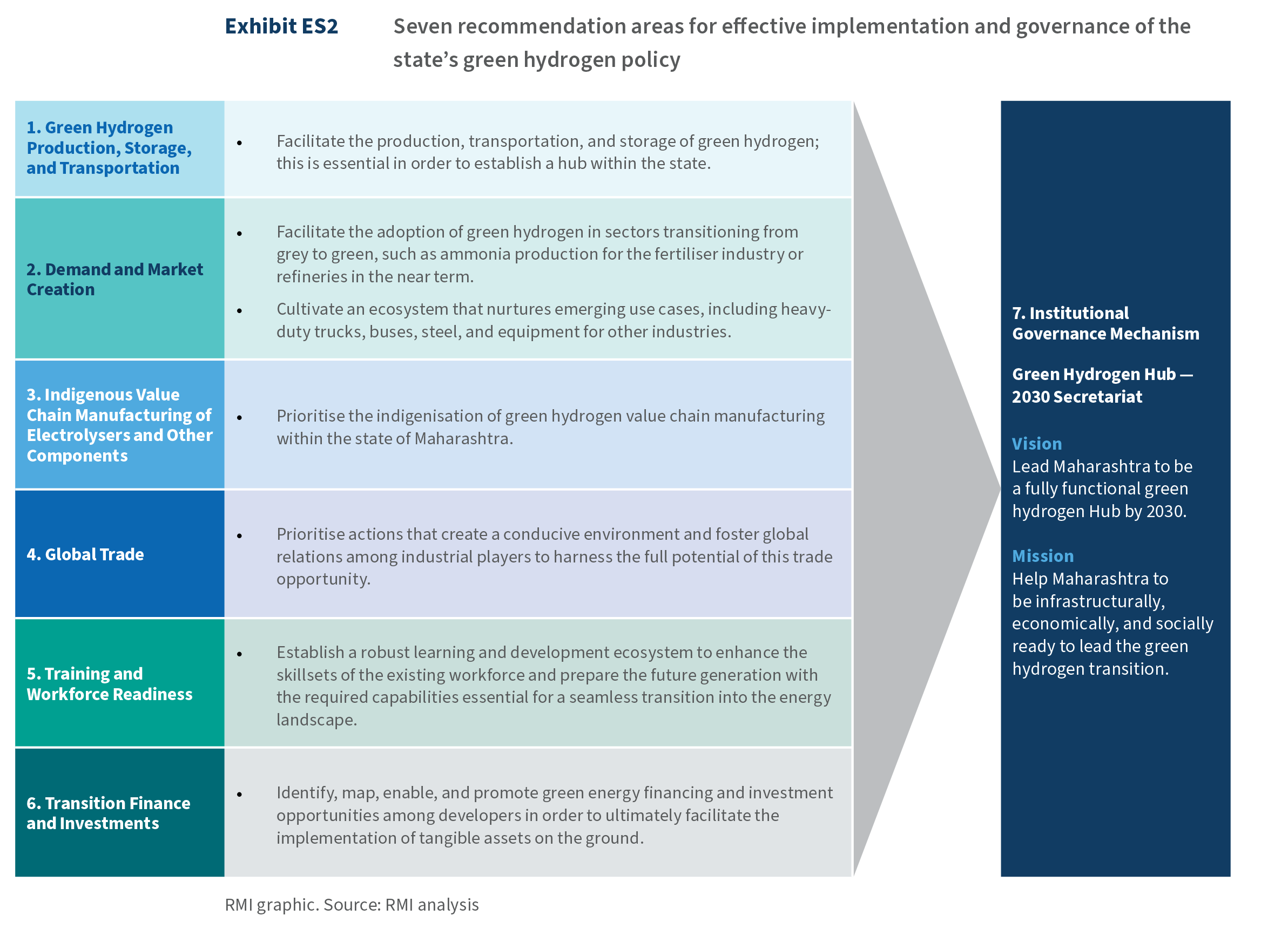
Maharashtra’s Green Hydrogen Policy 2023 signaled a bold step toward decarbonizing its industries and building a green economy. With a target to produce 500 kilotons of green hydrogen annually by 2030, the state is aiming to become a national hub for green hydrogen development.
However, unlocking this opportunity depends on addressing systemic challenges around production cost, infrastructure, and governance. This report assesses Maharashtra’s green hydrogen production competitiveness while assessing the impact of policy incentives on reducing the gap in grey and green hydrogen price points.
Green hydrogen in Maharashtra is not yet cost-competitive with grey hydrogen, but targeted incentives are closing the gap. The report finds that:
- On-site projects offer the lowest current cost (~$4/kg), but face land constraints; third-party models improve utilization but come at a premium.
- State capital expenditure subsidies have the potential to lower the levelized cost of hydrogen by 21–25 percent, bringing it down from $4.5 per kg to under $3.5 per kg
- Anchor units and projects connected to India’s Central Transmission Utility can reduce costs by up to 30 percent with capital and operational subsidies.
The report lays out a framework based on physical infrastructure, market creation, policy commitment, research and innovation, and financial assistance for scoping green hydrogen hubs in the state.
Our findings highlight that Raigarh and Ratnagiri could be potential early-mover green hydrogen hubs.
Based on the analytical findings, hubs scoping and need assessment, the report outlines a Green Hydrogen Readiness Plan focusing on seven impact areas from across the value chain. A right balance of incentives and governance can lead Maharashtra to be the national benchmark for a scalable, fully functional green hydrogen ecosystem.
